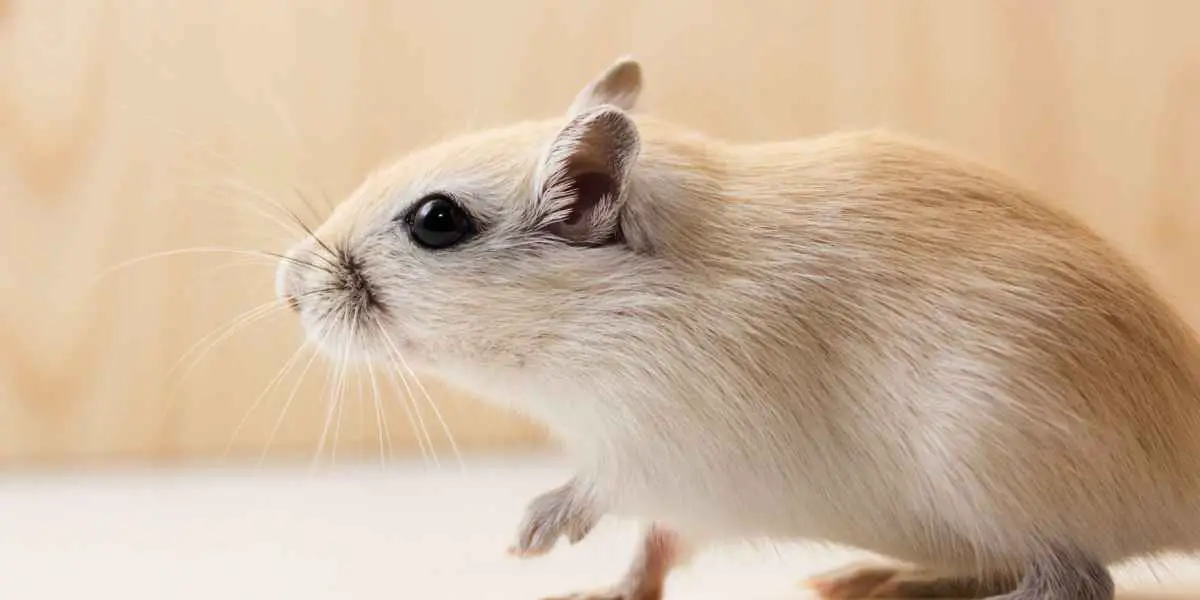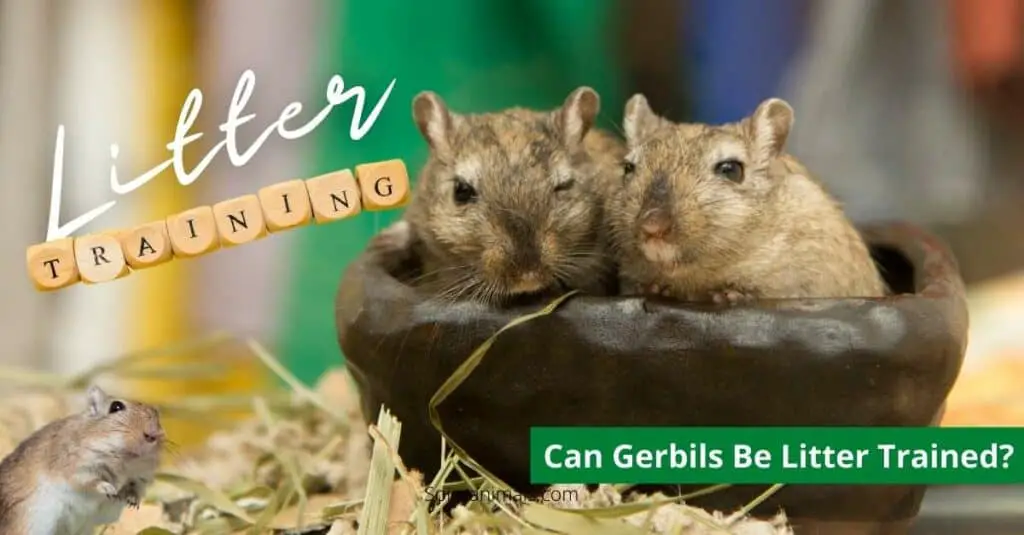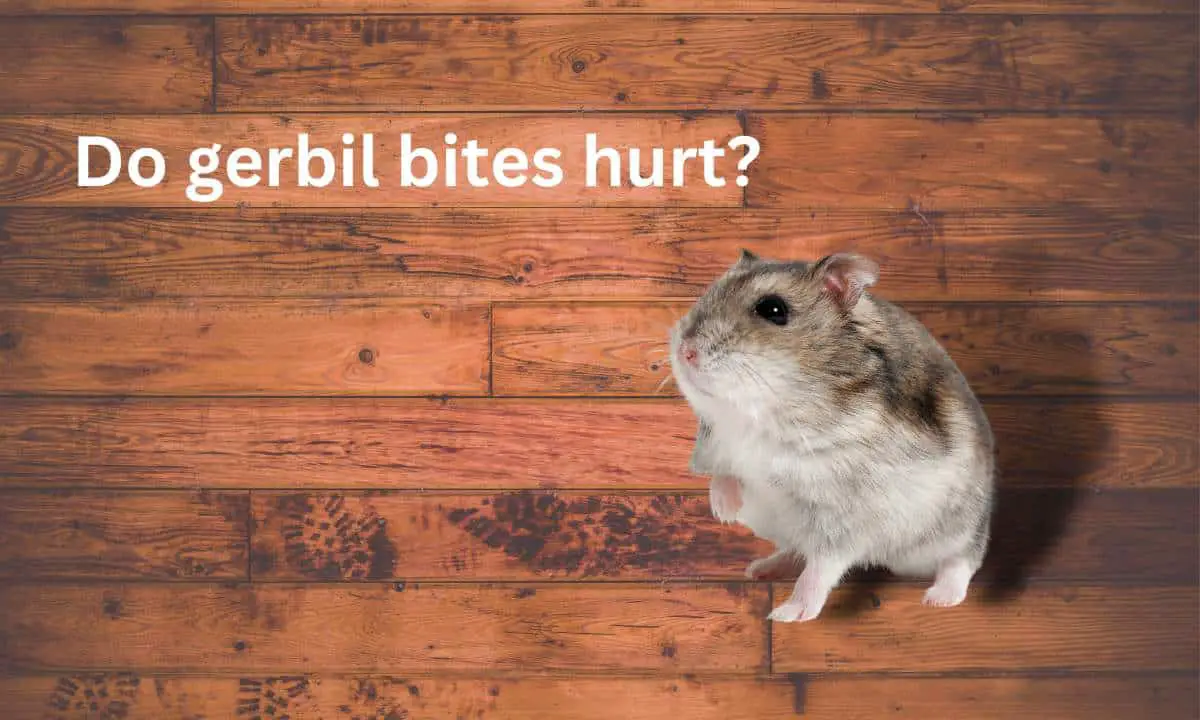To calm and tame skittish gerbils, practice patience, create a suitable environment, and use gentle handling techniques alongside treats and soothing communication.
If you’re a new gerbil owner, you may be wondering how to tame your skittish gerbil. Gerbils are naturally anxious animals that can be easily frightened, but with patience and persistence, you can build a bond with your furry friend. Taming your gerbil takes time, effort, and a lot of treats, but the rewards are well worth it.
Understanding skittish gerbils is the first step in taming them. Gerbils are prey animals, so they’re naturally wary of anything that might be a threat. They’re also social animals that live in groups in the wild, so they may be nervous if they’re kept alone. Providing your gerbil with a suitable environment and plenty of toys can help to reduce their anxiety and make them more receptive to taming.
Preparing a suitable environment is crucial to taming your gerbil. Gerbils need plenty of space to run, play, and hide, so a large cage with plenty of toys and hiding places is essential. Deep bedding is also important, as gerbils love to burrow and dig. Once you’ve created a comfortable and stimulating environment for your gerbil, you can begin the process of taming them.
Table of Contents
Key Takeaways
- Gerbils are naturally anxious animals that require patience and persistence to tame.
- Understanding skittish gerbils and providing them with a suitable environment is crucial to taming them.
- Taming techniques include offering treats, speaking softly, and handling your gerbil gently.
Understanding Skittish Gerbils
Gerbils are fascinating and social creatures that can make wonderful pets. However, due to their skittish nature and susceptibility to fear, it’s important to understand their behavior and take appropriate steps to build trust and rapport with them.
Behavioral Traits
Gerbils possess a natural inclination for curiosity and activity, yet their skittish tendencies and susceptibility to fright should not be overlooked. In response to perceived threats or unease, gerbils may resort to fleeing and seeking shelter, which can complicate interactions. Notably, gerbils are predominantly active during the night, being nocturnal creatures.
Of particular note, male gerbils, especially during the breeding season, can exhibit heightened skittishness. They might manifest aggression and territorial behavior, rendering handling a challenge. Patience and gentleness are paramount when engaging with your gerbil, particularly when they are anxious or apprehensive.
Understanding Fear in Gerbils
Gerbils, being prey animals, are innately predisposed to fear predators. Additionally, their sensitivity to ultrasonic frequencies can induce agitation or fear. By comprehending these fears, you can cultivate an environment that is secure and comforting for your gerbil.
To foster a sense of safety and well-being, it’s advisable to furnish the gerbil’s cage with ample hiding spots and tunnels. These refuges provide a retreat when feelings of fear or unease arise. Furthermore, you can strive to establish a serene and tranquil atmosphere, especially during their daytime slumber.
In summation, delving into the behavioral tendencies and fears of gerbils equips you to establish trust and nurture a bond. By creating an environment that promotes security and confidence, you can facilitate the gerbil’s seamless acclimatization to their new habitat.
Building Trust and Interaction
Gaining the trust of skittish gerbils necessitates strategic and patient interaction. Initially, allow the gerbils a few days to adjust to their new surroundings before initiating direct contact. Begin by placing a treat on your open hand to entice the gerbils. When they approach, resist the urge to touch them immediately.
If a gerbil climbs onto your hand, it’s a positive sign. If not, try gently herding them back to the cage with their favorite treats. Gradually, the gerbils will become more comfortable taking treats from your hand. Remember, these actions should be conducted during the gerbils’ wakeful moments to ensure a receptive response.
Interactions Through the Cage Bars
An effective approach to foster interaction without overwhelming the gerbils is to engage them through the bars of their cage. Extend your hand through the bars, offering treats like sunflower or pumpkin seeds. Allow the gerbils to approach and take treats at their own pace. As they become more accustomed, attempt gentle scratching along the sides and back to familiarize them with touch.
Limit Interaction, Maximize Trust
Understanding that gerbils are naturally afraid animals, it’s essential to respect their boundaries. While it’s tempting to increase interaction, restraint is key, especially during the early days of adjustment. By limiting engagement to times when the gerbils are awake and receptive, you establish a foundation of trust.
Ultimately, building a connection with skittish gerbils is a gradual process. Dedicate time, use high-quality treats, and follow these tips to ensure a positive and rewarding interaction. As the gerbils acclimate to their environment and your presence, you’ll witness their fear diminishing, replaced by curiosity and trust.

Preparing a Suitable Environment for Skittish Gerbils
Creating an optimal environment is a foundational step in taming skittish gerbils. To ensure your gerbils’ comfort and trust-building, it’s imperative to provide a secure and soothing space. In this segment, we’ll delve into cage selection, setup, and the significance of a tranquil atmosphere.
Choosing the Right Cage
The initial stride towards crafting a gerbil-friendly environment involves selecting an appropriate cage. Gerbils are innately active creatures that demand ample room for movement and play. A cramped cage can lead to stress and hostility, hindering your taming efforts.
When opting for a cage, prioritize those with a minimum capacity of 10 gallons per gerbil. Viable alternatives encompass glass aquariums, wire cages, or plastic enclosures with solid bases. Remember to sidestep wire floors, which could cause discomfort to your gerbils’ feet.
Setting Up the Cage
Following cage selection, it’s time to configure it to suit your gerbils’ needs. Lay down a snug bedding material, such as shredded paper or aspen shavings, with a depth of at least 2-3 inches. Integrate a water bottle and food dish, ensuring their consistent cleanliness.
For exercise, provide a solid wheel devoid of gaps or apertures—this prevents tail entanglement. Incorporate numerous hiding nooks and tunnels to foster your gerbils’ sense of security. Options like cardboard tubes and wooden shelters work splendidly for this purpose.
Concurrently, a sand bath is a vital hygiene component for gerbils. Fill a small container with chinchilla sand and place it within the cage. Gerbils will relish rolling in the sand, a behavior that nurtures their fur’s cleanliness and overall health.
Emphasizing a Tranquil Setting
Given gerbils’ sensitivity, it’s imperative to cultivate a serene environment, steering clear of loud clamors and abrupt motions. In the quest to tame your gerbils effectively, situating the cage within a tranquil section of your dwelling assumes paramount significance.
Refrain from situating the cage in proximity to noisy appliances or bustling pathways. Create a serene haven where gerbils can unwind and feel secure. This concerted approach mitigates stress levels, streamlining the taming process.
In recapitulation, meticulous attention to the environment plays a pivotal role in taming skittish gerbils. Opt for a spacious cage, encompassing snug bedding, feeding essentials, exercise tools, shelters, and a sand bath. Position the cage within a peaceful locale, diminishing stress and fortifying your taming endeavors.
Taming Techniques
When faced with a skittish gerbil, the question of how to tame it often arises. The encouraging news is that with a blend of patience and perseverance, you can gradually guide your gerbil toward comfort in your presence. In this section, we’ll delve into a range of taming techniques designed to foster trust and deepen your bond with your pet.
Hand Taming
A highly effective approach to taming gerbils is through the method of hand taming. This technique centers on acclimating your gerbil to your hand while creating positive associations. The process commences by introducing your hand to the cage, allowing your gerbil to explore its scent. It’s imperative to avoid sudden movements or attempts to grasp the gerbil.
As your gerbil grows accustomed to your hand’s presence, you can transition to offering treats from your palm. Hold the treat within your open hand and extend it to your gerbil, allowing it to approach and retrieve the treat at its pace. Consistent repetition of this practice, several times a day, will foster a level of comfort where your gerbil might willingly climb onto your hand for treats.
Utilizing Scent for Taming
Leveraging gerbils’ acute sense of smell can facilitate taming. Place a small piece of fabric within your gerbil’s enclosure for a few days, permitting it to absorb your scent. Subsequently, transfer the fabric to your pocket or beneath your clothing to imbue it with your scent.
After this period, reintroduce the scented fabric into your gerbil’s habitat. The familiar scent will evoke positive associations, potentially enhancing your gerbil’s comfort level around you.
The Significance of Trust
Trust stands as a cornerstone in the taming process. Demonstrating patience and consistency in your interactions is essential. Avoid abrupt motions or loud disturbances that could distress your gerbil. Instead, adopt deliberate movements and a gentle tone when engaging with your pet.
Establishing a routine is equally crucial. Regularly feed your gerbil at the same times each day, and engage with it during its active phases. Consider incorporating soothing music or engaging in gentle conversation to encourage sociability.
Feeding and Treats
Feeding and treats play a pivotal role in taming your skittish gerbil, allowing you to build trust and encourage bonding. Here, we’ll provide insights on selecting suitable treats and establishing a balanced feeding routine.
Choosing the Right Treats
Not all treats are created equal, and the choice of treats is crucial for your gerbil’s well-being. Opt for treats that are safe and healthful, such as pumpkin seeds, sunflower seeds, and small pieces of fruit or vegetables. However, it’s important to steer clear of treats that are high in sugar or fat, as they can lead to potential health issues.
When selecting treats, meticulously examine the ingredients and nutritional information. Prioritize treats that consist of natural components and avoid any with artificial colors or flavors. Moreover, remember to provide treats in moderation, as overindulgence can contribute to obesity and other health concerns.
Effective Feeding Strategies
A well-rounded feeding routine should encompass a variety of foods to ensure nutritional balance. Alongside treats, ensure your gerbil has access to a high-quality commercial food specifically formulated for gerbils.
Consistently offer fresh food and water, and maintain the cleanliness of your gerbil’s food dish to prevent bacterial growth. Additionally, introduce treats manually to foster trust and facilitate bonding. This can be especially beneficial for gerbils learning to step onto your hand.
Keep in mind that each gerbil is unique, and preferences may vary. Be patient and willing to experiment with different treats and feeding approaches until you find the most effective strategy. With time and dedication, you can help your skittish gerbil feel more at ease and build a stronger connection.
Handling Your Gerbil
When it comes to handling your gerbil, prioritizing safe techniques is crucial to ensure your pet’s security and comfort. In this section, we’ll delve into valuable tips for safe handling and outline effective methods for picking up your gerbil.
Safe Handling Techniques
Establishing comfort between you and your gerbil is paramount before attempting any handling. Begin by spending time near their cage, engaging them with a gentle voice and enticing treats. Gradually, your presence will become familiar, instilling a sense of ease.
When ready to handle your gerbil, approach with gradual and composed movements. Abrupt gestures or loud sounds can evoke fear. Gently and calmly approach your gerbil while maintaining a soothing dialogue.
Additionally, ensure your gerbil’s safety during handling. Given their delicate nature, improper handling can lead to injuries. Prior to engaging, ensure your hands are clean and dry. Refrain from handling if you have any cuts or wounds.
Picking Up Your Gerbil
Adopting a secure and gentle approach is essential when lifting your gerbil. The cupping technique is a widely employed method. Place your hand within the cage, allowing your gerbil to climb into your hand. Subsequently, gently enclose them with your other hand, fostering a sense of security.
Another method involves lifting your gerbil by the base of their tail. However, this technique should only be employed if your gerbil is comfortable with it and you possess experience in gerbil handling. Gently grasp the base of the tail with your thumb and forefinger, lifting them carefully.
While handling, ensure to support their body and prevent excessive pressure. Use your forearm to offer bodily support, keeping them close to your chest. This minimizes the risk of jumping or falling, cultivating a secure environment.
In conclusion, the key to successful gerbil handling lies in patience and gentleness. As time progresses, a bond between you and your pet will flourish. Prioritize your gerbil’s comfort and safety, relishing the journey of bonding with your pint-sized companion.
Dealing with Aggression and Fear
Understanding your gerbil’s emotions is crucial for building a trustful and harmonious relationship. This article offers strategic techniques for dealing with aggression and fear, allowing you and your gerbil to step up onto a new level of companionship.
Understanding Aggression in Gerbils
Biting Behavior
Aggression in gerbils can manifest in various ways, with biting being the most common. This typically occurs when your rodent feels threatened or is not yet accustomed to handling. If you do experience a bite, it’s important to maintain your composure and gently withdraw your hand from the cage. Reacting aggressively could exacerbate the situation, making your gerbil even more difficult to tame.
Dashing Behavior
Another sign of aggression is erratic dashing within their enclosure. When you observe this, it usually indicates that the gerbil is likely experiencing stress or feeling threatened. Limit interaction to times when they seem calmer, and take this as a prompt to identify potential stressors like diet, excitement, or other pets like cats, and then work on alleviating them.
Strategies to Overcome Fear in Gerbils
Gradual Approach
New gerbils may need a few days to adjust to their new home. During this period, keep maintenance and interaction to a minimum. You might observe your gerbil hiding or fleeing upon your approach, which is a sign of fear. A good way to gain its trust is to approach it calmly and gradually, avoiding any sudden movements that could cause startling reactions.
Creating Comfort Zones
To help your gerbil feel secure, provide hiding spots and tunnels within their cage. This gives them a sanctuary, which makes it easier for your gerbil to step up onto a new level of trust with you.
Bonding Time
Spending time near their cage and speaking in a soothing tone can help get your gerbil used to your presence. Offer a treat as a form of positive reinforcement. Over time, try to entice the gerbils back with favorite treats and work in small steps to increase their comfort level.
Gentle Handling
If your gerbil hesitates to touch your hand when you open the cage door, you might try gently scratching the sides and back of their enclosure. This mimics their natural grooming behavior and can be a good way to gain their trust.
Toys and Playtime
Gerbils are playful and curious creatures that need lots of toys and accessories to keep them occupied. Toys and playtime are essential for taming skittish gerbils. Here are some tips on how to choose the right toys and the importance of playtime.
Choosing the Right Toys
When choosing toys for your gerbils, it is important to keep their natural instincts in mind. Gerbils love to dig, burrow, and chew, so toys that mimic these behaviors are ideal. Here are some toy options for your gerbils:
- Wooden blocks and chew toys: Gerbils love to chew on things, so wooden blocks and chew toys are perfect for them. Make sure the toys are made of untreated wood and free from any chemicals that could harm your gerbils.
- Exercise wheels: Gerbils love to run, so an exercise wheel is a must-have toy. Choose a solid-surface wheel to prevent your gerbils from getting their tails caught in the spokes.
- Tubes and tunnels: Gerbils love to burrow and hide, so tubes and tunnels are great toys to have in their cage. You can also create a maze using cardboard boxes or PVC pipes.
- Sand baths: Gerbils need to bathe in sand to keep their fur clean and healthy. You can buy a special sand bath for your gerbils or use a shallow container filled with chinchilla sand.
For a full list of toys you can read this article here
Importance of Playtime
Playtime is crucial for taming skittish gerbils. It helps them burn off excess energy and get used to human interaction. Here are some tips on how to incorporate playtime into your gerbils’ routine:
- Set up a playpen: Gerbils need a safe and secure area to play outside of their cage. You can set up a playpen using cardboard boxes or a small animal playpen.
- Supervise playtime: Always supervise your gerbils during playtime to ensure their safety. Make sure they don’t escape or get into any dangerous situations.
- Offer treats: Use treats to encourage your gerbils to interact with you during playtime. You can offer them small pieces of fruits or vegetables or special gerbil treats.
- Be patient: Taming skittish gerbils takes time and patience. Don’t force them to interact with you if they’re not ready. Let them come to you on their own terms.
In conclusion, toys and playtime are essential for taming skittish gerbils. Choose toys that mimic their natural instincts and provide a safe and secure area for playtime. With patience and persistence, your gerbils will become more comfortable with human interaction and make great pets.
Frequently Asked Questions
How can I make my skittish gerbils feel more comfortable?
To make your skittish gerbils feel more comfortable, start by providing them with a safe and secure habitat. Make sure their cage is large enough for them to move around freely, and that it is filled with plenty of hiding spots, toys, and chew items. Additionally, try to keep their environment calm and quiet, as loud noises and sudden movements can startle them.
What are some tips for getting a gerbil to trust you?
Getting a gerbil to trust you takes time and patience. Start by offering them treats from your hand and speaking to them in a calm and soothing tone. Once they start taking treats from your hand, try gently petting them on their back or head. Avoid grabbing or squeezing them, as this can scare them and make them more skittish.
What are some calming techniques for scared gerbils?
If your gerbil is scared or stressed, there are a few things you can do to help calm them down. Try placing a small towel or piece of fabric in their cage that has your scent on it. This can help them feel more secure and comforted. Additionally, playing soft music or using a calming spray designed for small animals can also help to soothe them.
How long does it typically take to tame a gerbil?
The amount of time it takes to tame a gerbil can vary depending on their personality and past experiences. Some gerbils may become comfortable around humans within a few days, while others may take several weeks or even months. It’s important to be patient and consistent in your efforts to tame them and to never force them to interact with you if they are not ready.
What are some fun activities to do with my gerbil to build trust?
There are many fun activities you can do with your gerbil to build trust and bond with them. Some ideas include providing them with new toys and chew items, creating obstacle courses for them to navigate, and playing hide-and-seek with treats. You can also try hand-feeding them their meals or taking them out of their cage for supervised playtime.
What are some healthy treats I can give my gerbil as a reward?
There are many healthy treats you can give your gerbil as a reward for good behavior. Some options include fresh fruits and vegetables, such as carrots, apples, and spinach. You can also provide them with small amounts of whole grains, such as oats or barley, as well as dried herbs and flowers. Avoid giving your gerbil sugary or fatty treats, as these can be harmful to their health.



